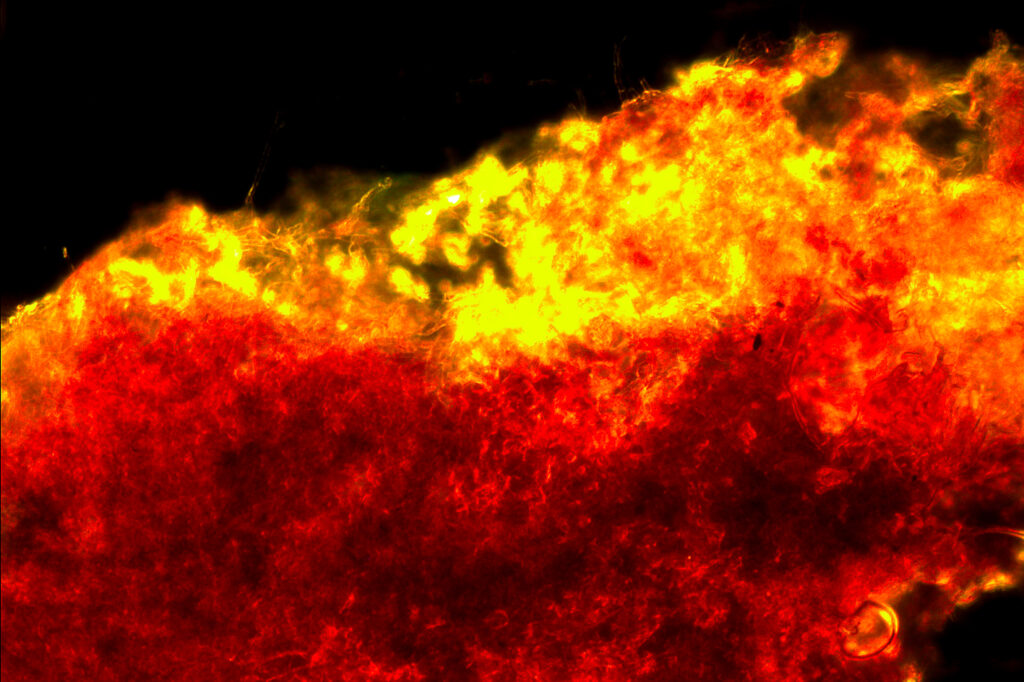
The work of Anna Zagrodzka demonstrates the artist’stransdisciplinary competences, connecting the humanities and natural sciences. They allow Zagrodzka to depict the world under a microscope, on the micro scale, thus on a level that in classical representations is rendered
imperceptible. Her competences also enable a shift in perspective that transcends anthropocentrism while evoking an idea inspired by Bruno Latour, namely: it is not only the bacteria, fungi and lichens which the artist photographs that affect people but also the reverse is true – people affectmicroorganisms and flora. It is the encounter between the two that leads to a fundamental transformation of both life forms.
Ewa Domańska
Professor of Human Sciences
editing: Maciek Bernaś
music: Miłosz Kowalewski
The exhibition on show is the result of observations, and subsequent visualizations, of the matter that is left behind in the former death camps of the Holocaust. This matter includes the biosphere surrounding these locations as well as the man-made structures built in these dehumanizing spaces. The research I conducted stand as a means of revealing the “life after life” of certain processes taking place in natural settings that are suffused with the misery of human suffering. As the title of the work, I adopted the name of the fungus Alternaria Alternata, known to be among the most expansive of all organisms, which I encountered during my „microbiological peregrinations.”
Anna Zagrodzka

